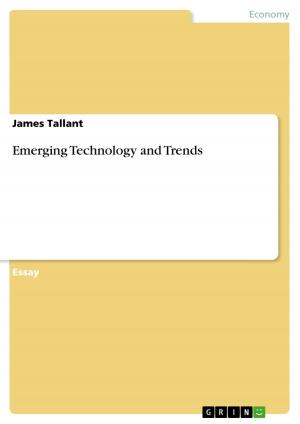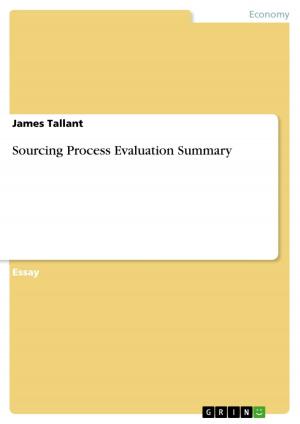Lester Burnham's pursuit of happiness: the film 'American Beauty' and its socio-cultural and spiritual dimensions
Nonfiction, Entertainment, Drama, Anthologies| Author: | Alexander Kasten | ISBN: | 9783638059749 |
| Publisher: | GRIN Publishing | Publication: | June 9, 2008 |
| Imprint: | GRIN Publishing | Language: | English |
| Author: | Alexander Kasten |
| ISBN: | 9783638059749 |
| Publisher: | GRIN Publishing |
| Publication: | June 9, 2008 |
| Imprint: | GRIN Publishing |
| Language: | English |
Seminar paper from the year 2007 in the subject American Studies - Culture and Applied Geography, grade: 2,3, Dresden Technical University (Department of American Cultural Studies), course: The US: 1980's till today, 12 entries in the bibliography, language: English, abstract: If one takes a look at the 1999 Sam Mendes picture American Beauty and its overwhelming success both at the box offices and at the countless movie festivals all around the globe, one might start wondering what it was that made this relatively cheap ('only' 15 Million $ budget) film about a middle-class All-American father and his struggle with life in a consume oriented suburban environment so successful? The film not only grossed more than twenty times its production cost, but is also one of the highest critically acclaimed movies of all times. Many main-stream critics trace the films success back to its genre twisted plot, the outstanding performance of both its main and supporting actors and its broad appeal that, as Begeman has put it: 'transcends genre, a narrowly defined audience, and cultural and socioeconomic borders.' The story of a burned-out average middle-class American who tries to regain his personal freedom through dramatic personal changes in his life, seems to provide just the perfect material for yet another short-lived movie experience whose half-life is comparable to those of the many 'Help yourself' guidebooks published each and every year. But those superficial conclusions are as far away from the truth as the movie is from being ordinary. On the contrary, it seems that even more than seven years after its initial publication, film scholars and analysts have not yet managed to interpret the movie in its multidimensional entity. Without even trying to claim to have found the key approach to understanding American Beauty, this paper will focus on main character Lester Burnham's quest for happiness and meaning in life and follow him through the movie's structure and narrative in order to answer the rather simple question: what is this film about? Is it simply a critique of a materialistic American middle-class society that is driven by the superficial 'suburban pressure to conform and to acquire' ? Or does it also offer deeper reaching motifs that needed to be examined in order to get to the core meaning of the film? To answer those questions, this paper will first provide a comprehensive summary of the films structure, narrative and characters by applying it to the analytical pattern of Syd Field's 'Paradigm' , putting its main focus on the character Lester Burnham and his interaction with his environment.
Seminar paper from the year 2007 in the subject American Studies - Culture and Applied Geography, grade: 2,3, Dresden Technical University (Department of American Cultural Studies), course: The US: 1980's till today, 12 entries in the bibliography, language: English, abstract: If one takes a look at the 1999 Sam Mendes picture American Beauty and its overwhelming success both at the box offices and at the countless movie festivals all around the globe, one might start wondering what it was that made this relatively cheap ('only' 15 Million $ budget) film about a middle-class All-American father and his struggle with life in a consume oriented suburban environment so successful? The film not only grossed more than twenty times its production cost, but is also one of the highest critically acclaimed movies of all times. Many main-stream critics trace the films success back to its genre twisted plot, the outstanding performance of both its main and supporting actors and its broad appeal that, as Begeman has put it: 'transcends genre, a narrowly defined audience, and cultural and socioeconomic borders.' The story of a burned-out average middle-class American who tries to regain his personal freedom through dramatic personal changes in his life, seems to provide just the perfect material for yet another short-lived movie experience whose half-life is comparable to those of the many 'Help yourself' guidebooks published each and every year. But those superficial conclusions are as far away from the truth as the movie is from being ordinary. On the contrary, it seems that even more than seven years after its initial publication, film scholars and analysts have not yet managed to interpret the movie in its multidimensional entity. Without even trying to claim to have found the key approach to understanding American Beauty, this paper will focus on main character Lester Burnham's quest for happiness and meaning in life and follow him through the movie's structure and narrative in order to answer the rather simple question: what is this film about? Is it simply a critique of a materialistic American middle-class society that is driven by the superficial 'suburban pressure to conform and to acquire' ? Or does it also offer deeper reaching motifs that needed to be examined in order to get to the core meaning of the film? To answer those questions, this paper will first provide a comprehensive summary of the films structure, narrative and characters by applying it to the analytical pattern of Syd Field's 'Paradigm' , putting its main focus on the character Lester Burnham and his interaction with his environment.















